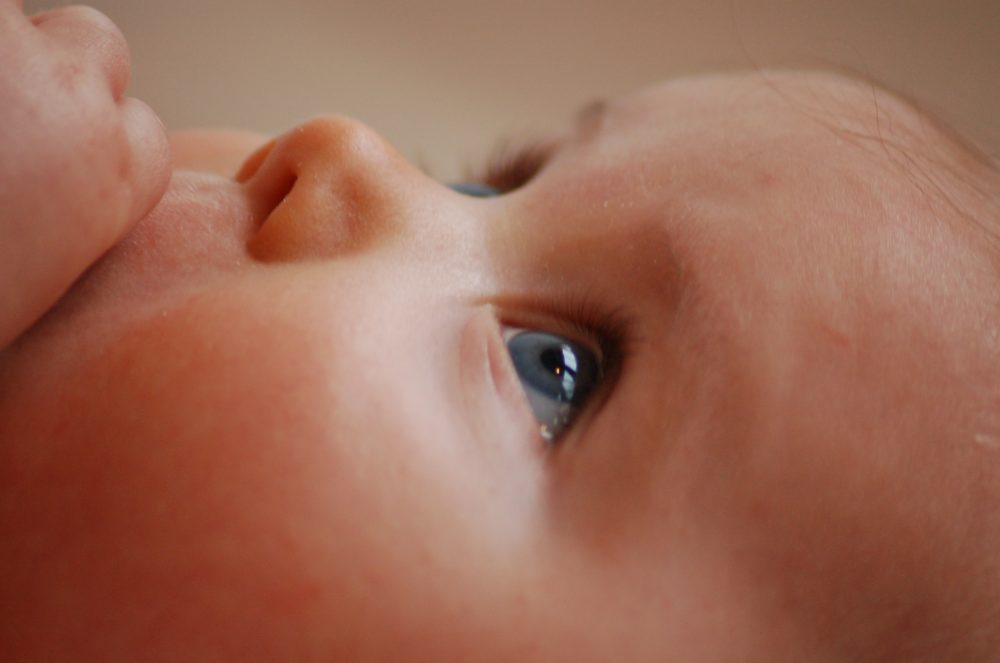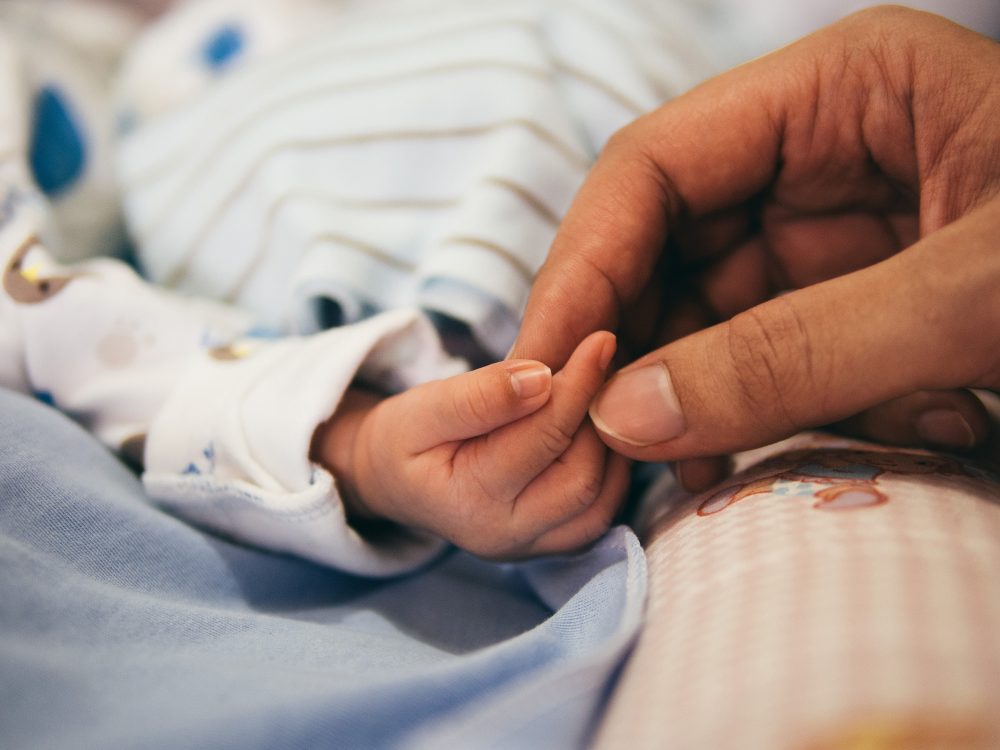As a childbirth educator, there are a couple of topics that fill me with dread when addressing a group of soon-to-be parents, and one of them is circumcision.
If you’ve spent any time at all on the internet as it relates to parenting, you may have noticed that this topic can spark some very heated discussion, so much so that it can be hard to wade through the rhetoric to find solid information. Folks hold some strong opinions on this topic—and for good reason! The decision whether to circumcise or not will carry into every day of a boy’s life. So, how to give accurate information that will help parents decide? Here’s how I do it:
There are basically 3 things for parents to consider in deciding whether or not to circumcise their baby boy:
Religious or cultural reasons
On this point, I don’t figure I have too much to contribute as a childbirth educator, though occasionally I have helped Jewish clients who did not want to circumcise to explore the idea of holding an alternate ceremony (known as a brit shalom).
Aesthetic reasons
These usually fall under the headings of: “wanting him to look like Daddy” or “wanting him not to be bullied in the locker room.” Again, I don’t feel that I can speak to one person’s sense of what looks right or wrong, and I particularly don’t need to know which of the fathers in my class were circumcised or not. But I can note that since the rate of infant circumcisions performed nationwide in the US is around 55%, there is a high probability that there will be another boy in the locker room whose penis looks like your kid’s, whichever route they choose to take.
Health benefits and risks
Since I work very hard to research and present information based on current research evidence in my classes, this final category is the one to which I can really speak. And it can be surprisingly hard to sift through the claims that are out there about risk and benefit!
The American Academy of Pediatrics has been equivocal, to be sure. Their current statement on the one hand seems to endorse the practice, and on the other hand it doesn’t. This statement can be found on their website for parents:
“The American Academy of Pediatrics believes that circumcision has potential medical benefits and advantages, as well as risks. Evaluation of current evidence indicates that the health benefits of newborn male circumcision outweigh the risks and that the procedure’s benefits justify access to this procedure for families who choose it, however, existing scientific evidence is not sufficient to recommend routine circumcision.
Therefore, because the procedure is not essential to a child’s current well-being, we recommend that the decision to circumcise is one best made by parents in consultation with their pediatrician, taking into account what is in the best interests of the child, including medical, religious, cultural, and ethnic traditions.”
Their longer policy statement can be found here and the very detailed and long article from the task force behind the policy statement is here.
So, according to the AAP, the benefits outweigh the risks, but not so much as to become “essential to a child’s current well-being.” Which leaves us where, exactly?
I did my best to dig for solid numbers, and came up with this handy chart to compare benefits and risks. Let’s work our way down the list together, shall we?
Yes, Circumcision is painful
First off, circumcision is painful, and medical professionals recommend adequate pain relief both during the procedure and during the healing process (which takes about a week). The choice to circumcise your baby means he will feel pain, and there is always a small risk that he will have an adverse reaction to the pain medication.
Complications can occur
Further, the choice to circumcise means incurring the risk that there will be complications to the procedure. It is basically impossible to get hard numbers on this, since there is no universal reporting standard on complications. The numbers in my chart are a good guess. Mild to moderate surgical complications include: irritation of the glans, infection, excessive bleeding, painful urination, or scarring of the urinary outlet. The much more rare severe surgical complications include: hemorrhage or having too much skin removed. Some babies will need to have the procedure redone, either because the first attempt was inadequate, or because the skin re-adhered while healing.
For a small number of babies whose parents chose to leave them intact, they will develop a medical reason (often phimosis) that will require circumcision in adolescence or as an adult.
Perceived benefits of circumcision
Now we get to one of the benefits of infant circumcision: the reduction in risk of UTI. It is important to note that most UTIs in males occur in the first year of life, but overall incidence is still low at 1%. Baby boys who are circumcised do have a three to ten-fold reduction in risk of contracting a UTI in the 1st year of life.
Sometimes a reduction in the risk of penile cancer is mentioned as a benefit of circumcision, but the overall incidence of this type of cancer is so low, that the slight reduction in risk for circumcised men is barely statistically significant.
Finally, the other major purported benefit of circumcision is the reduction in the risk of contracting HIV and some other STIs. There have been several high quality studies done in Africa that show significant reduction of these risks. Whether their findings can be generalized to the population of American men is debatable.
It is important to note that rates of contracting sexually transmitted infections are affected to a high degree by socio-cultural influences. For example, the rates of circumcision in Northern Europe are much lower than the United States, but their STI rates are much lower as well. Regardless, the reduction in risk for circumcised men would not be completely protective. In other words, parents would need to teach their sons to wear condoms.
And on the somewhat uncomfortable topic of considering one’s baby boy’s future sex life, it is debatable whether adult men who have been circumcised experience diminished sexual satisfaction and function. I’m not sure whether this could ever be definitively proven, but there are certainly plenty of people who like to argue this point.
And that’s it. The risk/benefit ratio for circumcision as it regards to health concerns. You can see why the AAP has had a hard time making a definitive recommendation in favor of circumcision. It is, as they wisely put it, a decision that parents must weigh for their own sons. If you want to read more science-based conclusions, check out The Informed Parent: A Science-Based Resource for Your Child’s First Four Years.
This guest post was written by Stephanie Spitzer-Hanks. Stephanie gave birth to her first child in the Netherlands, where the nurturing and encouragement she received from so many women there inspired her to become a doula. Now she strives to give unconditional support and evidence-based education to families so that they can be confident in making the choices that are right for them. She is an ICEA certified childbirth educator, an Evidence Based Birth® Instructor, a DONA certified birth and postpartum doula, a StillBirthday certified bereavement doula, and a certified lactation counselor through Healthy Children’s Center for Breastfeeding. On the side of all of that, Stephanie is an ordained minister in the United Church of Christ, and she serves as a chaplain at a hospital and writes and speaks about birtheology when she gets the chance. You can find out what she is up to at www.revdoula.com.



“There have been several high quality studies done in Africa that show significant reduction of these risks.”
That is the one sentence I object to. The notorious “African studies” were poorly designed and executed, and were by biased researchers.